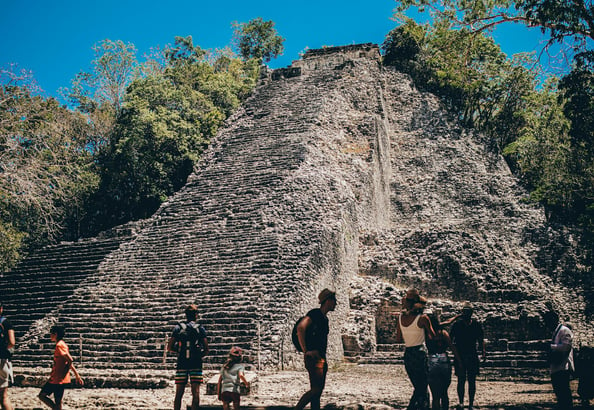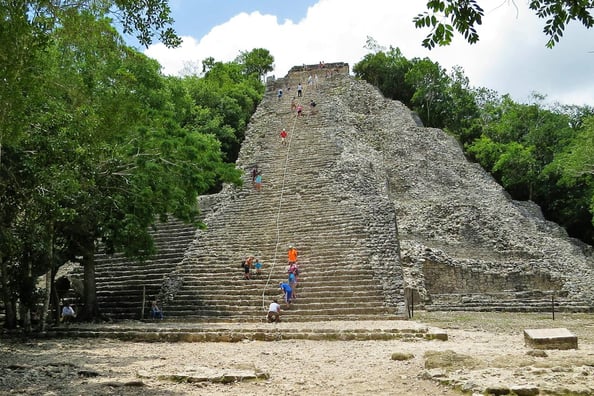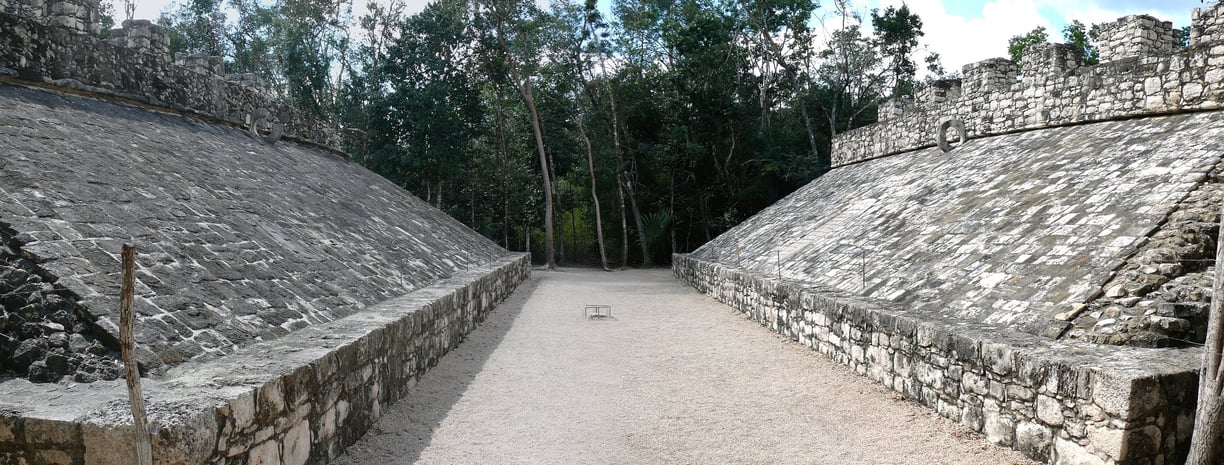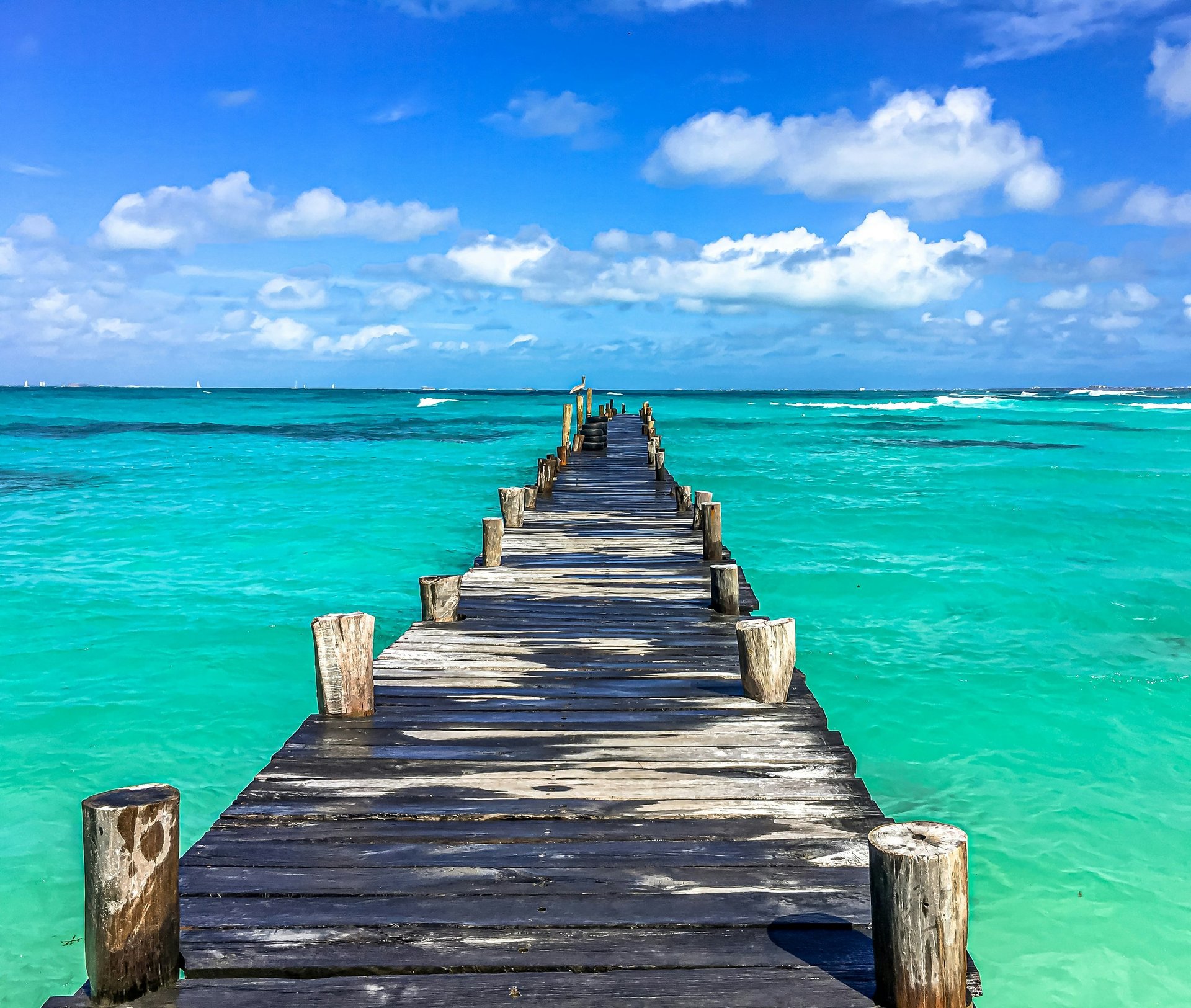
Explore the cities and sights of the Yucatán
Discover the Yucatán's stunning sites and vibrant cities via Train Maya
Cities to explore
Explore the following stunning cities along the Train Maya route:
Cancún
One of Mexico’s most popular beach destinations, Cancún is located on the northeastern coast of the Yucatán Peninsula in the state of Quintana Roo. It's situated on the Caribbean Sea and faces the ocean, just north of Mexico's resort area known as the Riviera Maya. Developed by the Mexican government in the early 1970s, Cancun is a planned city, designed solely to attract tourists.
Cancun is most famous for two things: its easy access to many Mayan ruins, and its white sandy beaches that are well-served by a long line of luxury hotels called the Hotel Zone, or Zona Hotelera. As you might expect, the Hotel Zone and downtown Cancun have a plethora of shopping, fine dining, and companies that provide ocean excursions for snorkeling or diving.
Many, if not most, of the tourists who ride the Tren Maya will likely enter Mexico via Cancún. Its large, international airport is located twenty minutes outside the city, and its popularity as a destination make it a great choice for good deals on flights from the US and elsewhere.
If you happen to fly into Cancún, you can access the Tren Maya by taking a free electric shuttle from Cancún Airport to the Tren Maya Station.
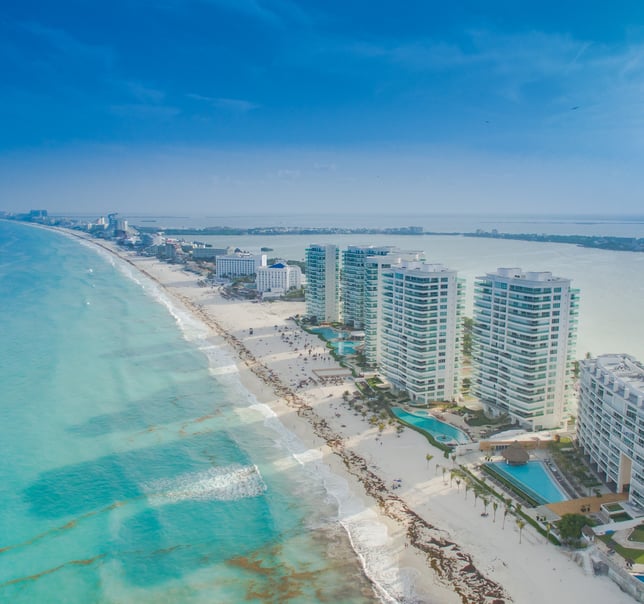

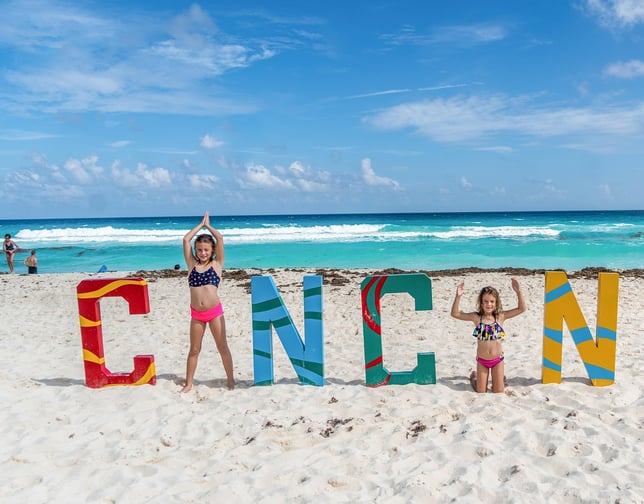

Merida
The capital city of the state of Yucatán, Mérida is the largest city on the Yucatán as well as one of the saftest in all of Central America and Mexico.
Mérida has a rich cultural heritage thanks to the mix of Mayan and Spanish cultures, and much of its Mayan culture still survives and can be witnessed in the dress, accent, and language of native Meridans.
Its history runs deep. The Cathedral of Mérida, built in the late 16th century with stones from nearby Mayan ruins, is the oldest cathedral in the mainland Americas. Mérida also boasts the third largest old town district in North America.
Three times Forbes has ranked Mérida one of the best cities in Mexico in which to live, invest, and do business, and in 2022, the UN-Habitat's City Prosperity Index named Mérida the city with the highest quality of life in Mexico.
Visit Merida to see its old town and its many historic buildings and sites and to sample the unique cuisine and culture of the Yucatán.
Not only does Tren Maya stop at the Teya Mérida railway station, which is some 5 miles (8 km) east of the city, the city is also well-served by its bus system and taxis.
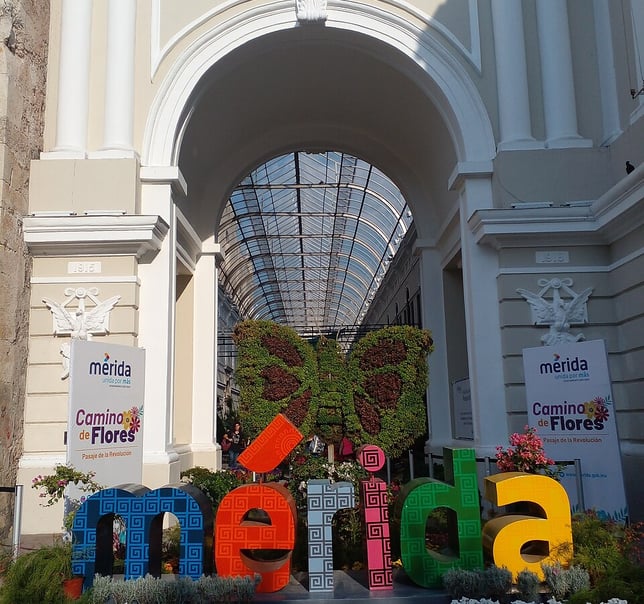

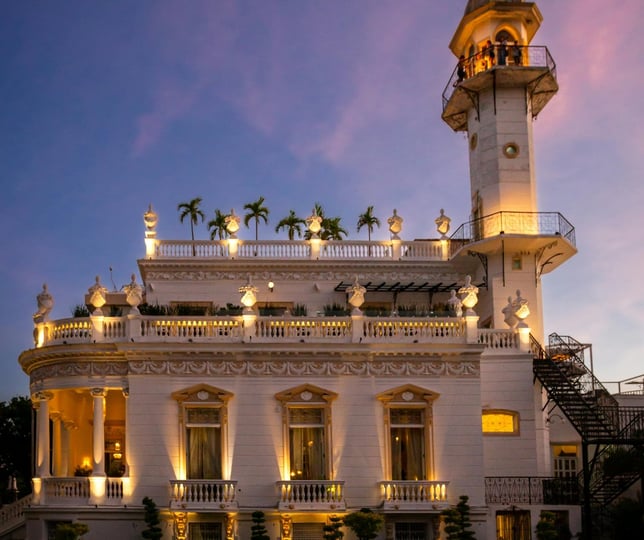

Playa del Carmen
The next stop after Cancun, if you’re traveling south on Tren Maya, is Playa del Carmen, another resort city on the Caribbean Sea and also located in Quintana Roo.
Once a sleepy resort town and also part of Mexico's Riviera Maya region, Playa del Carmen has soared in popularity in recent years, and it is one of Latin America's fastest-growing communities. In 2017, more than one million tourists passed through the city.
Playa, as it is also known, is famous for its white sand beaches, turquoise waters, coral reefs, surrounding rainforests, and quaint resort towns and spas called balnearios that are dedicated to relaxation. Its downtown is centered around the Quinta Avenida, a busy pedestrian thoroughfare with many shops, restaurants, and clubs.
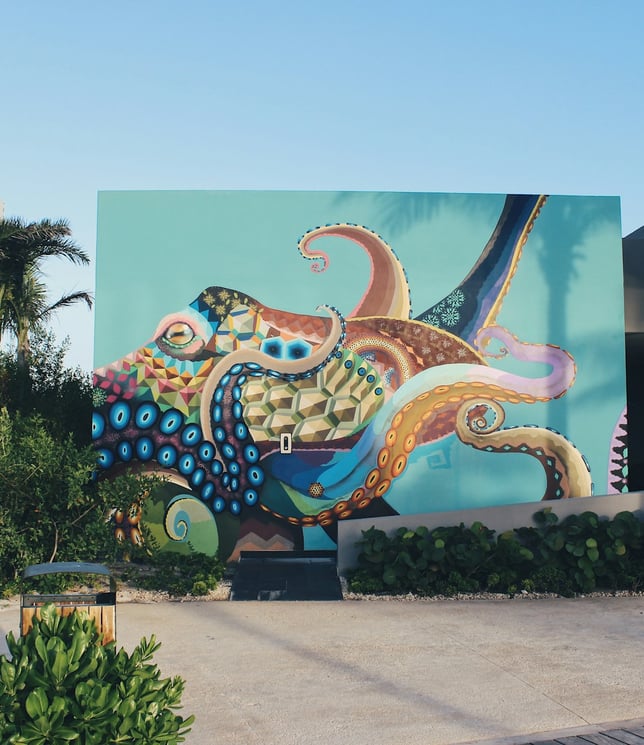

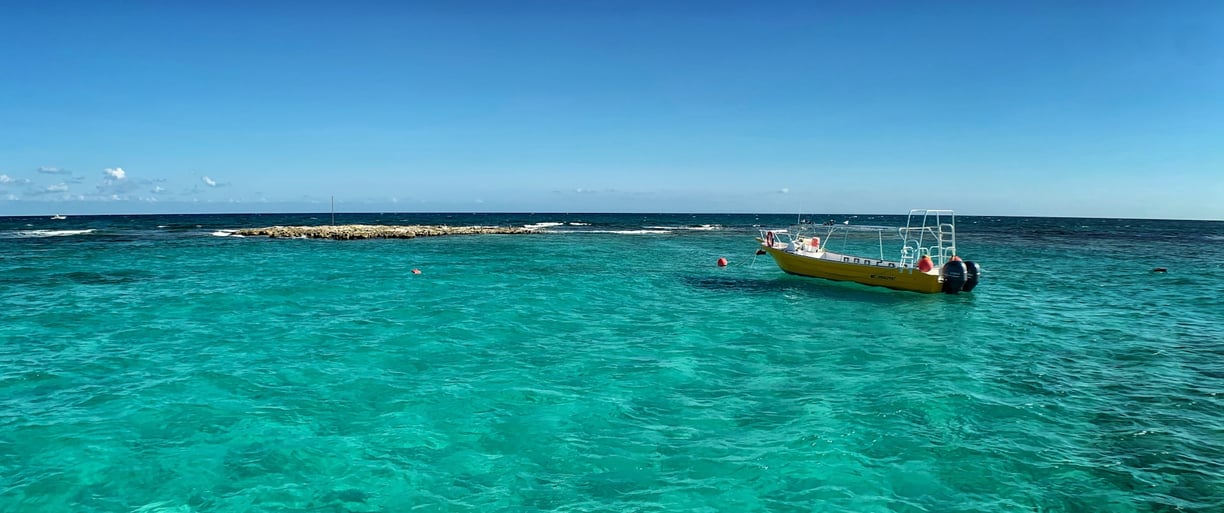

Campeche
Campeche (officially San Francisco de Campeche) is a mid-sized city in the Mexican state of Campeche on the Bay of Campeche in the Gulf of Mexico.
The city was founded in 1540 atop the Mayan city of Can Pech. Little remains of the Pre-Columbian city, but much of city’s Spanish colonial charm remains, thanks to walls and fortifications that protected the city from invaders. The state of preservation and quality of its colorful architecture earned it the status of a World Heritage Site in 1999 and makes it a stop for those who enjoy visiting vibrant colonial buildings and neighborhoods.
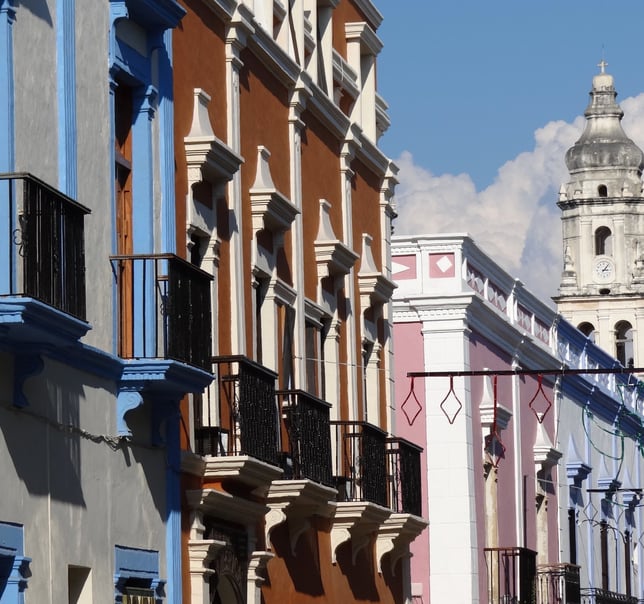

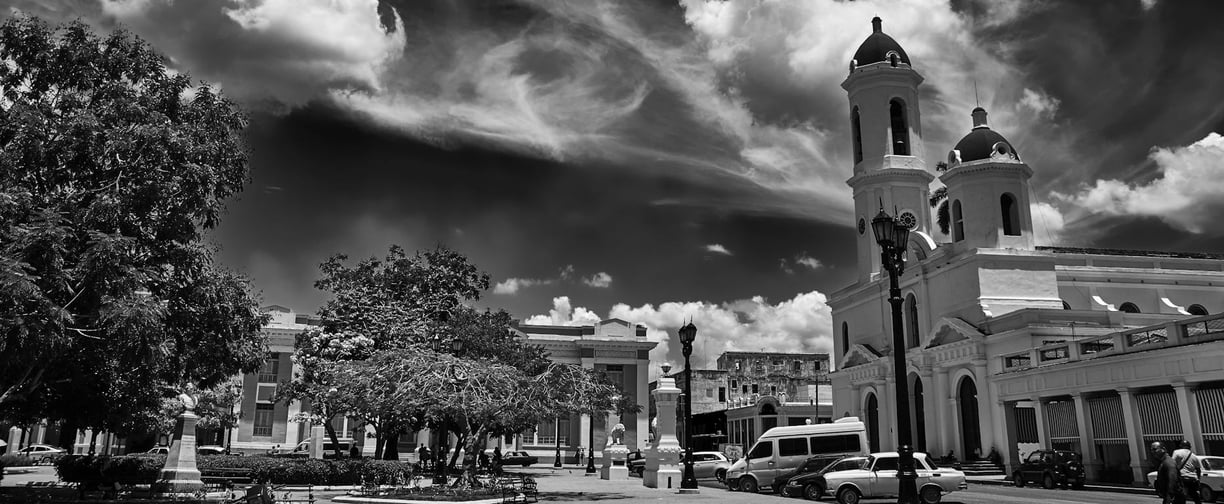

Bacalar
Bacalar is the largest city in Bacalar Municipality of Quintana Roo, about 25 miles (40 kilometers) north of Chetumal. It borders the Caribbean Sea and is known for its beautiful beaches and lagoon.
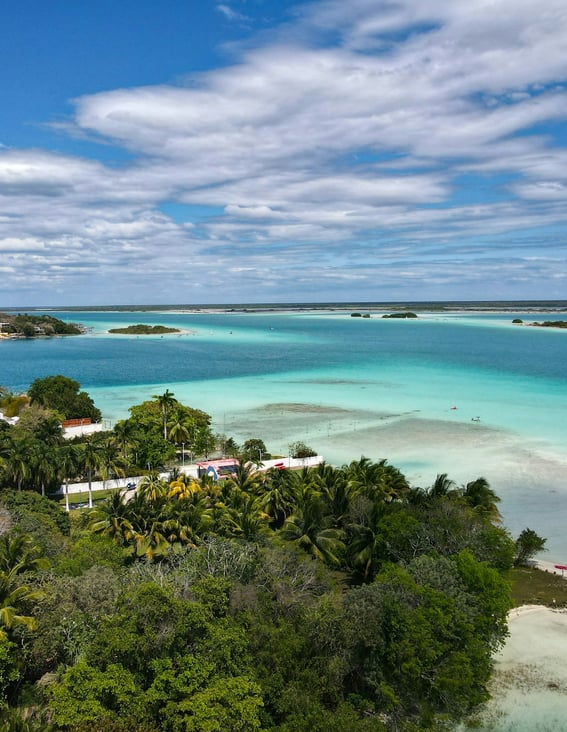

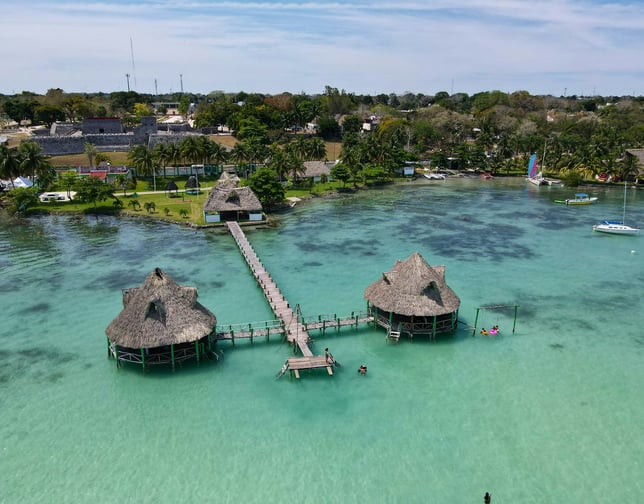

Chetumal
Chetumal is a city on the east coast of the Yucatán Peninsula in Mexico. It is the capital of the state of Quintana Roo, and in 2020 had a population of 169,028.
The city is situated on the western side of Chetumal Bay, near the mouth of the Río Hondo. Chetumal is an important port for the region and operates as Mexico's main trading gateway with the neighboring country of Belize. Goods are transported via a road connecting Chetumal with Belize City to the south, and also via coastal merchant ships. It is served by its airport, the Chetumal International Airport.
Because of its location on the Caribbean coastline, it is vulnerable to tropical cyclones. And so, on September 27, 1955, Hurricane Janet, a Cat 5 storm, struck Chetumal, nearly destroying it. Some 500 of its inhabitants died and gone were almost all wooden buildings. After the hurricane, Chetumal was rebuilt as a modern city, leaving behind its Anglo-Caribbean wooden architecture. Hurricane Dean, another Cat 5 storm, also made landfall near Chetumal in 2007, causing much damage.
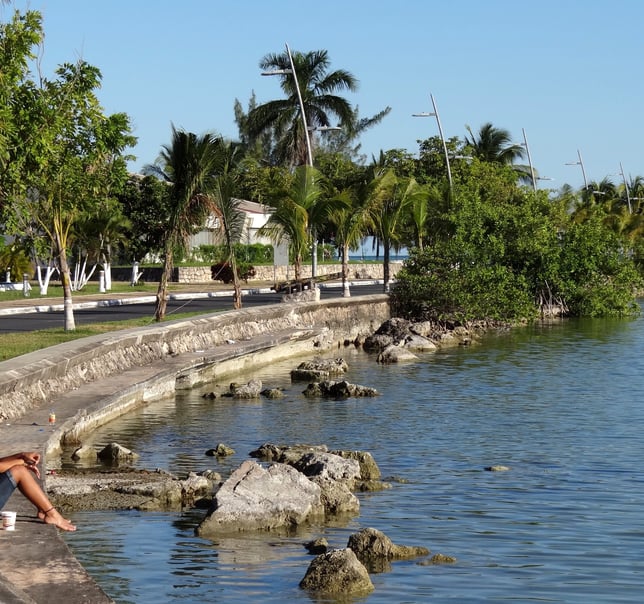

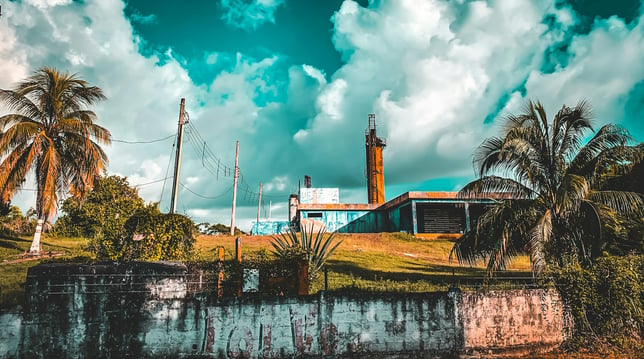

Sites to explore
But it's not just cities, Train Maya can help you explore the following stunning historical sites along its route:
Chichén Itzá
Chichén Itzá was a large pre-Columbian city built by the Maya people of the Terminal Classic period located in Tinúm Municipality, Yucatán State, Mexico.
Chichén Itzá is one of the most visited archeological sites in Mexico with over 2.6 million tourists in 2017. It exhibits a multitude of architectural styles, reminiscent of styles seen in central Mexico and of the Puuc and Chenes styles of the Northern Maya lowlands. The presence of central Mexican styles was once thought to have been representative of direct migration or even conquest from central Mexico, but most contemporary interpretations view the presence of these non-Maya styles more as the result of cultural diffusion.
Chichén Itzá was one of the largest Maya cities and it was likely to have been one of the mythical great cities, or Tollans, referred to in later Mesoamerican literature. The city may have had the most diverse population in the Maya world, a factor that could have contributed to the variety of architectural styles at the site.
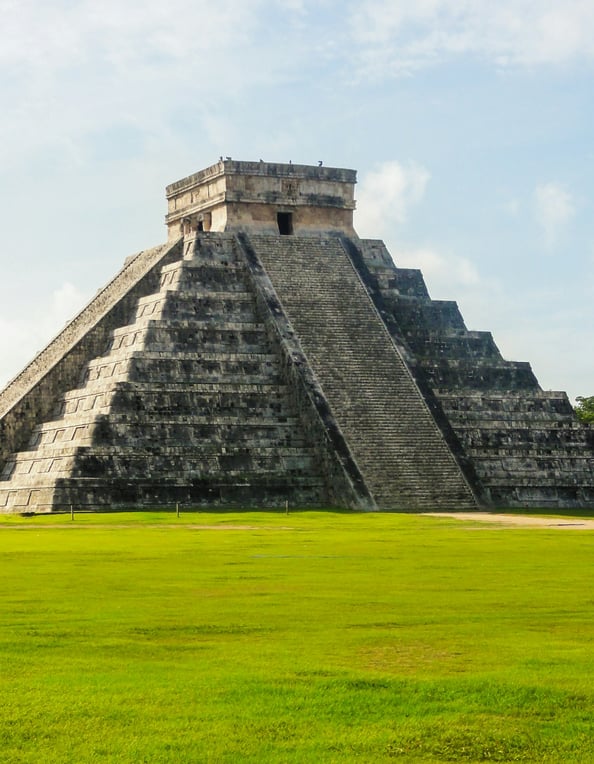

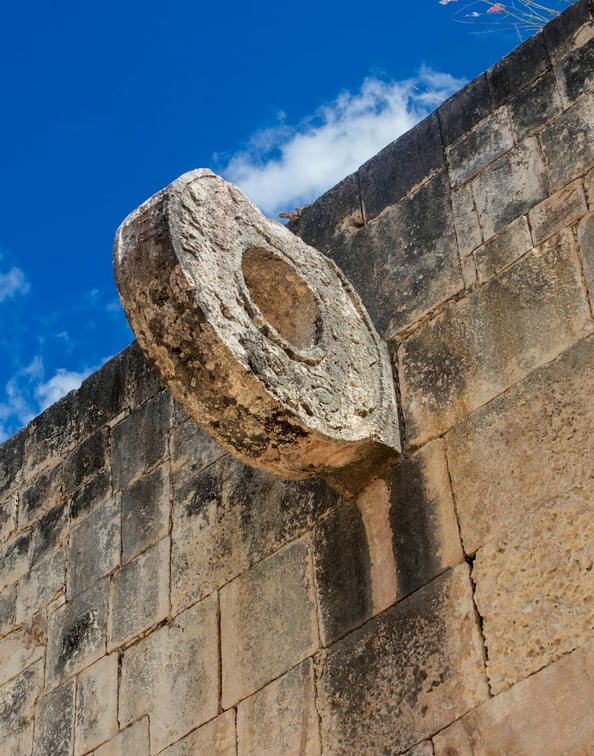

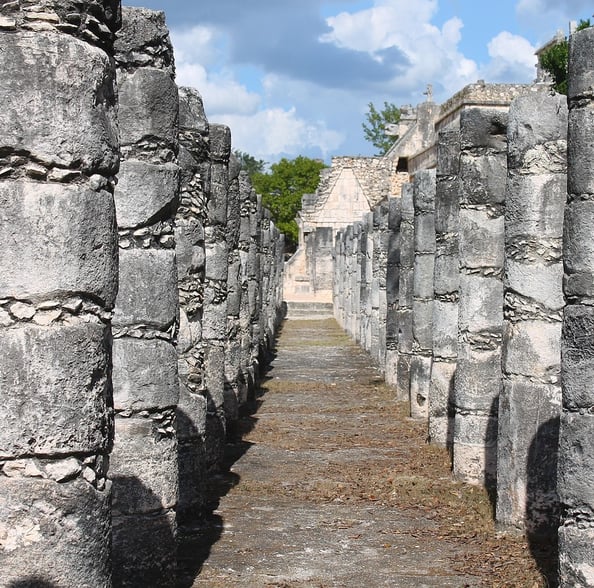

Palenque
Palenque was a Mayan city-state in southern Mexico that perished in the 8th century. The Palenque ruins date from ca. 226 BC to ca. 799 AD. After its decline, it was overgrown by the jungle of cedar, mahogany, and sapodilla trees but has since been excavated and restored. It is located near the Usumacinta River in the state of Chiapas.
Palenque is a medium-sized site, smaller than Tikal, Chichen Itza, or Copán, but it contains some of the finest architecture, sculpture, roof comb and bas-relief carvings that the Mayans produced. Much of the history of Palenque has been reconstructed from reading the hieroglyphic inscriptions on the many monuments; historians now have a long sequence of the ruling dynasty of Palenque in the 5th century and extensive knowledge of the city-state's rivalry with other states such as Calakmul and Toniná. It is estimated that less than 10% of the total area of the city has been explored, leaving more than a thousand structures still covered by jungle.
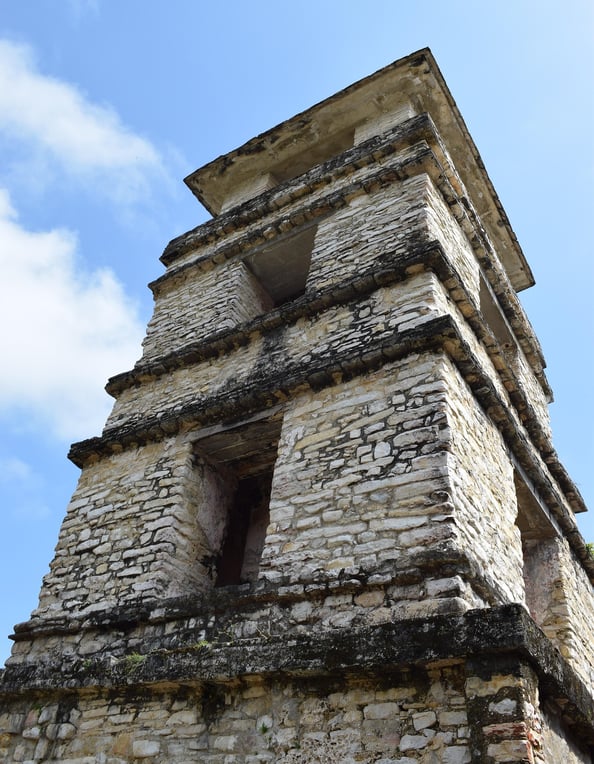

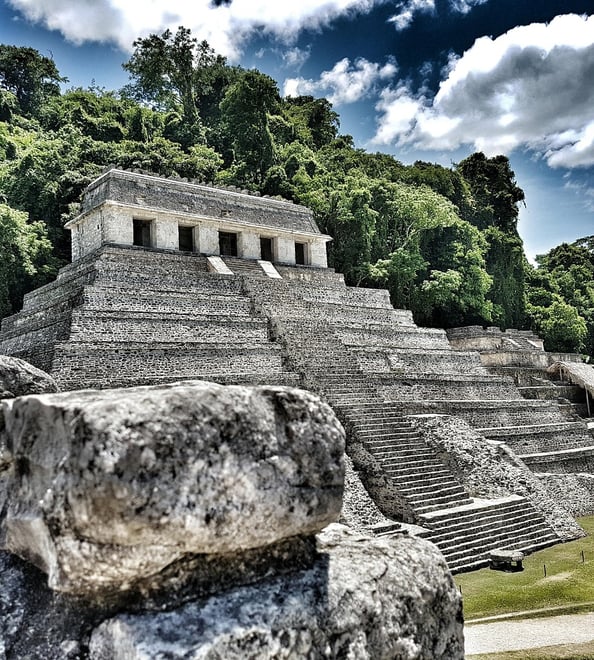

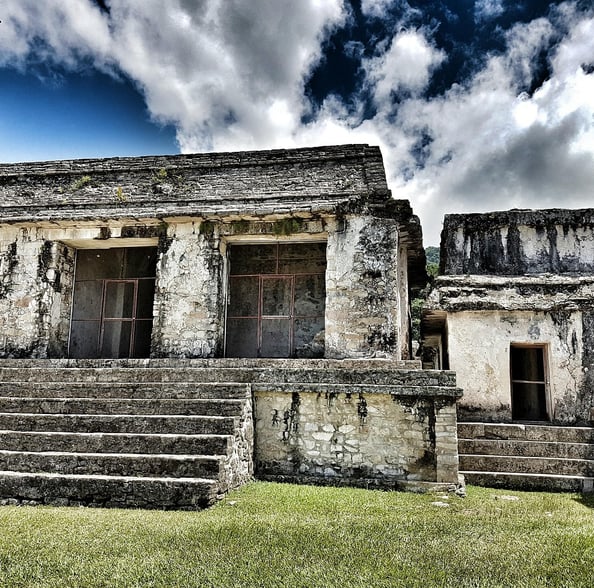

Tulum
Tulum is the site of a pre-Columbian Mayan walled city that was a major port for Coba in the Mexican state of Quintana Roo. Its ruins are situated on 39-foot (12-meter) high cliffs along the east coast of the Yucatán Peninsula on the Caribbean Sea. One of the last cities built by the Mayans, they continued to occupy it for about 70 years after the Spanish conquest began but was abandoned by the end of the 16th century. Tulum is one of the best-preserved coastal Maya sites and its ruins are a must-see for anyone visiting the Yucatan.
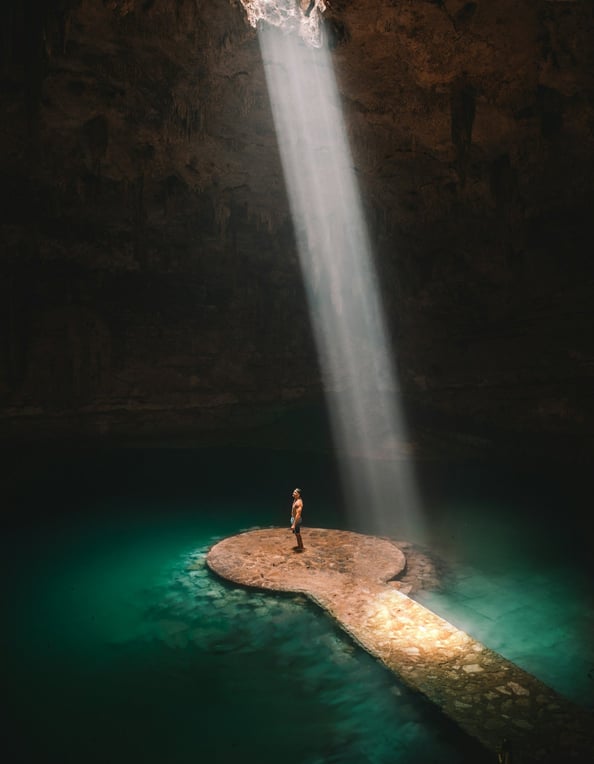

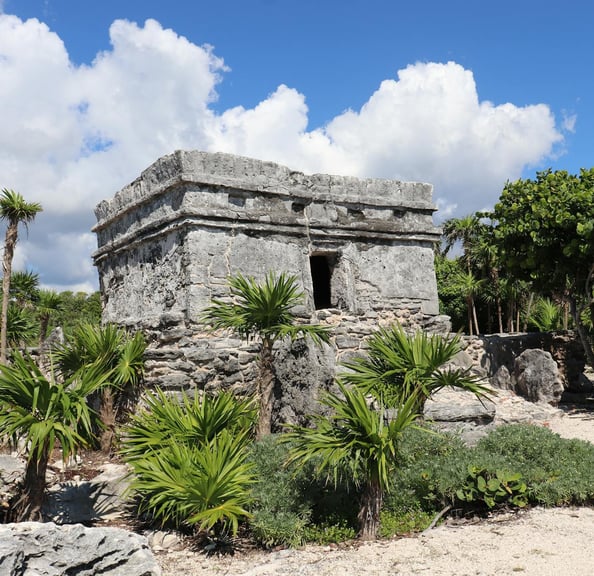

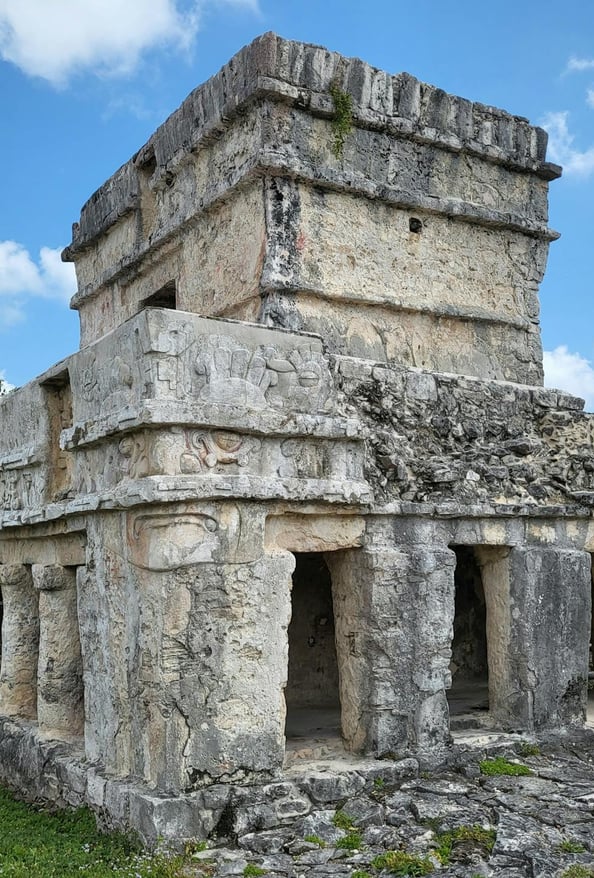

Edzná
Edzná is a Mayan archaeological site in the Mexican state of Campeche. It is best known for the main temple, which is located on a plaza with several other ruins, as well as an ancient ball court where ancient Mayan ball games were played.
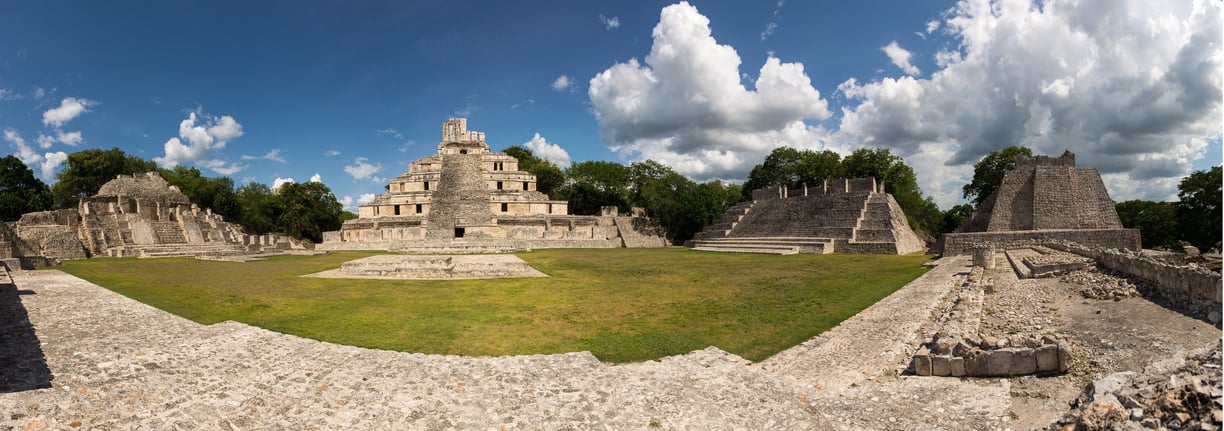

Uxmal
Uxmal, an ancient Mayan city of the classical period, is located in the Puuc region of the western Yucatán Peninsula, and represents the region's dominant architectural style, featuring smooth low walls that open on ornate friezes based on representations of typical Maya huts.
Uxmal is located 62 km south of Mérida. Its buildings are large and decorated, and ancient roads, called sacbes. connect them to each other and to other cities in the area such as Chichén Itzá and to Caracol and Xunantunich (in Belize) and Tikal (in Guatemala).
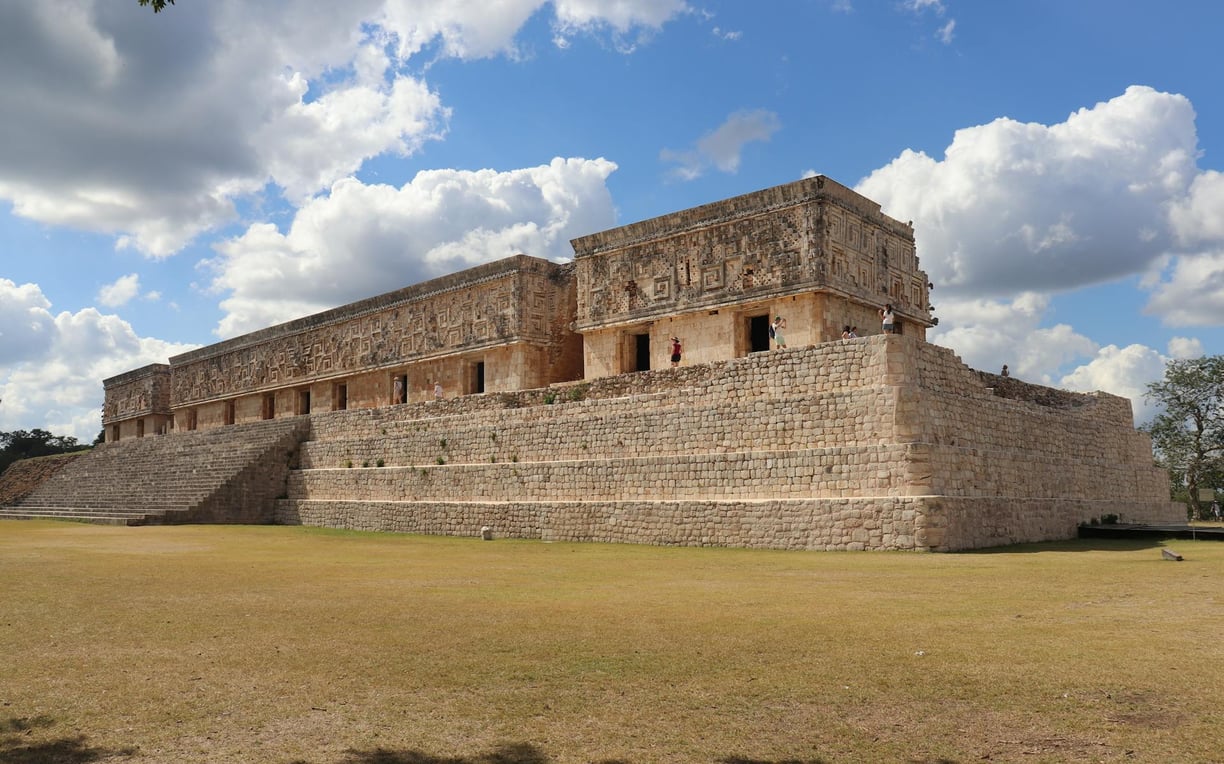

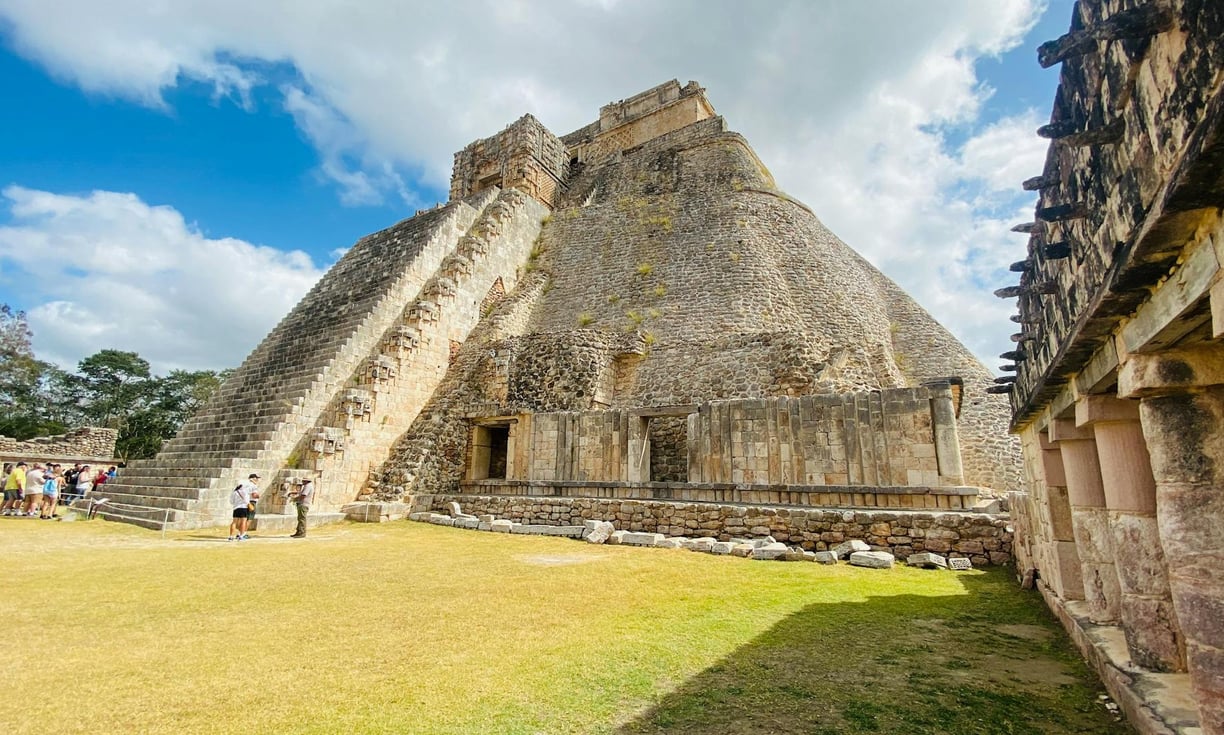

Ichkabal
Ichkabal is a large ancient Mayan city located in the jungle of Quintana Roo in Mexico dating from the Middle Preclassic period of the Maya civilization around 400 BC, it developed as a monumental city until the Postclassic period.
Ichkabal contains six main architectural groups covering about 60 km with monumental buildings and pyramids that are visible above the jungle canopy. The main plaza is one of the biggest sites from the Maya Lowlands. The site was connected to the city of Dzibanche by a large sacbe over 40 km long.
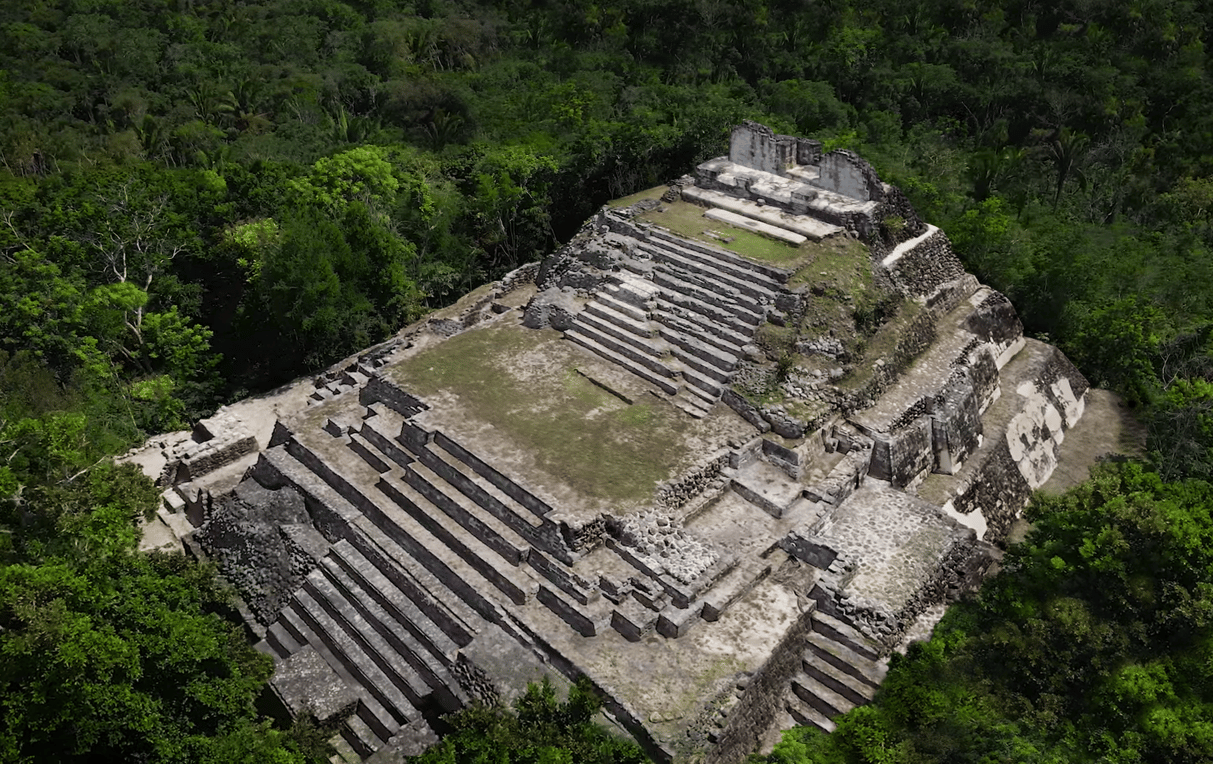

Coba
Coba is an ancient Mayan city located in Quintana Roo. The site contains the largest network of stone causeways in the ancient Mayan world and includes many engraved and sculpted stelae that document ceremonial life and important events of the Late Classic Period (AD 600–900). The adjacent modern village bearing the same name, reported a population of 1,278 inhabitants in the 2010 Mexican federal census.
Coba is located around two lagoons, Lake Coba and Lake Macanxoc. A series of elevated stone and plaster roads (sacbe) radiate from the central site to various smaller sites.
At its peak, Coba was estimated to have had some 50,000. The bulk of Coba's major construction seems to have been made in the middle and late Classic period, about 500 to 900 AD, with most of the dated hieroglyphic inscriptions from the 7th century.
